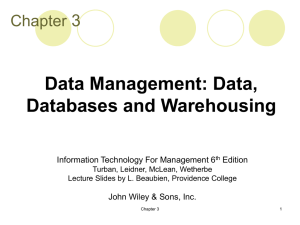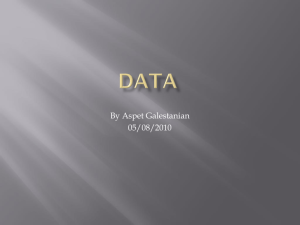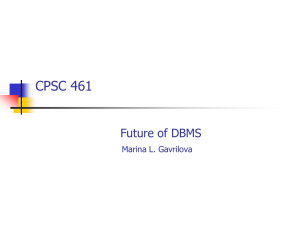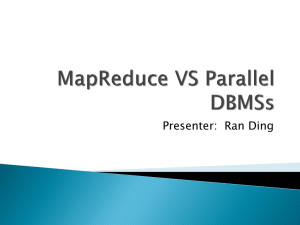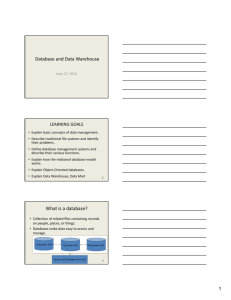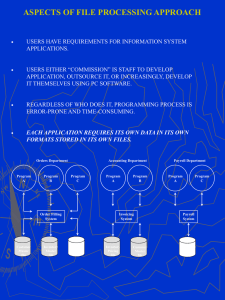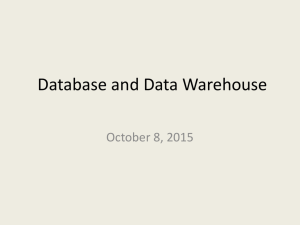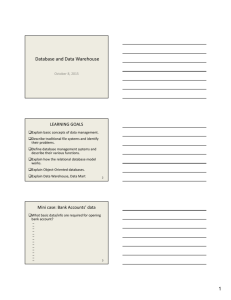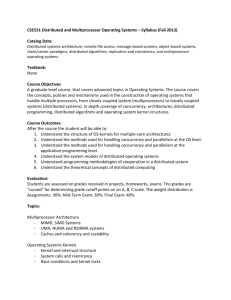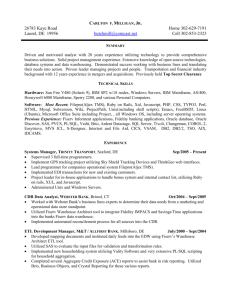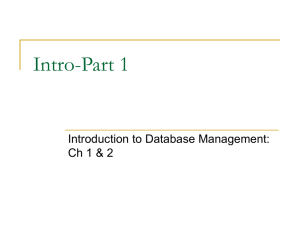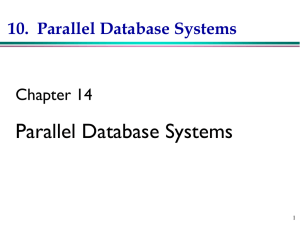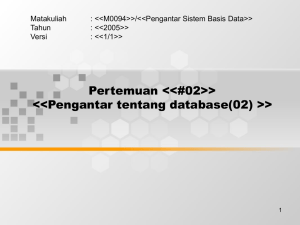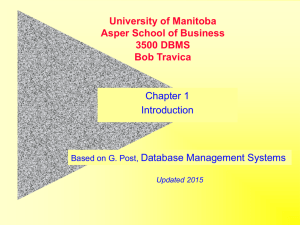Mapping the Data Warehouse to a Multiprocessor Architecture
advertisement
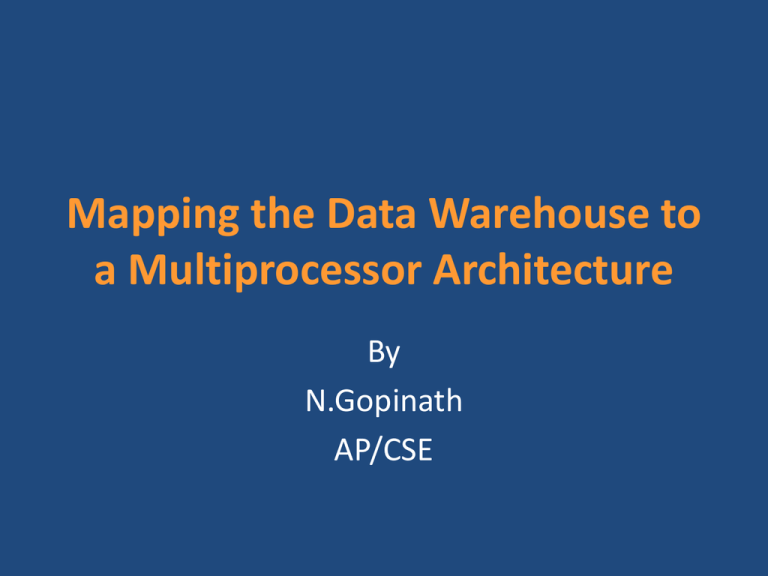
Mapping the Data Warehouse to a Multiprocessor Architecture By N.Gopinath AP/CSE Mapping the Data Warehouse to a Multiprocessor Architecture • The goals of linear performance and scalability can be satisfied by parallel hardware architectures, parallel operating systems, and parallel DBMSs. • Parallel hardware architectures are based on Multi-processor systems designed as a Shared-memory model, Shared-disk model or distributed-memory model. • Parallelism can be achieved in three different ways: – Horizontal Parallelism (Database is partitioned across different disks) – Vertical Parallelism (occurs among different tasks – all components query operations i.e. scans, join, sort) – Data Partitioning Database Architectures for Parallel Processing Shared-memory Architecture - multiple processors share the main memory space, as well as mass storage (e.g. hard disk drives) Shared Disk Architecture - each node has its own main memory, but all nodes share mass storage, usually a storage area network Shared-nothing Architecture storage as well as main memory. each node has its own mass Parallel RDBMS Features Data Warehouse development requires a good understanding of all architectural components, including the data warehouse DBMS Platform. Understanding the basic architecture of Warehouse database is the first step in evaluating and selecting a product. The developers and users of the Warehouse should demand the following features from the DBMS vendor: Scope and techniques of Parallel DBMS Application Transparency The Parallel environment DBMS Management Tools Price/ Performance Parallel DBMS Vendors • Some of the most famous Vendors of Parallel DBMS are as follows; • ORACLE – for Oracle Parallel Server Option (OPS) and Parallel Query Option (PQO) • Informix – developed its Dynamic Scalable Architecture (DSA) to support Shared-Memory, Shared-Disk, and Shared-Nothing Models • Sybase – implemented in a product called SYBASE MPP • IBM – Used in DB2 Parallel Edition (DB2 PE), a Database based on DB2/6000 Server Architecture Thank you…

